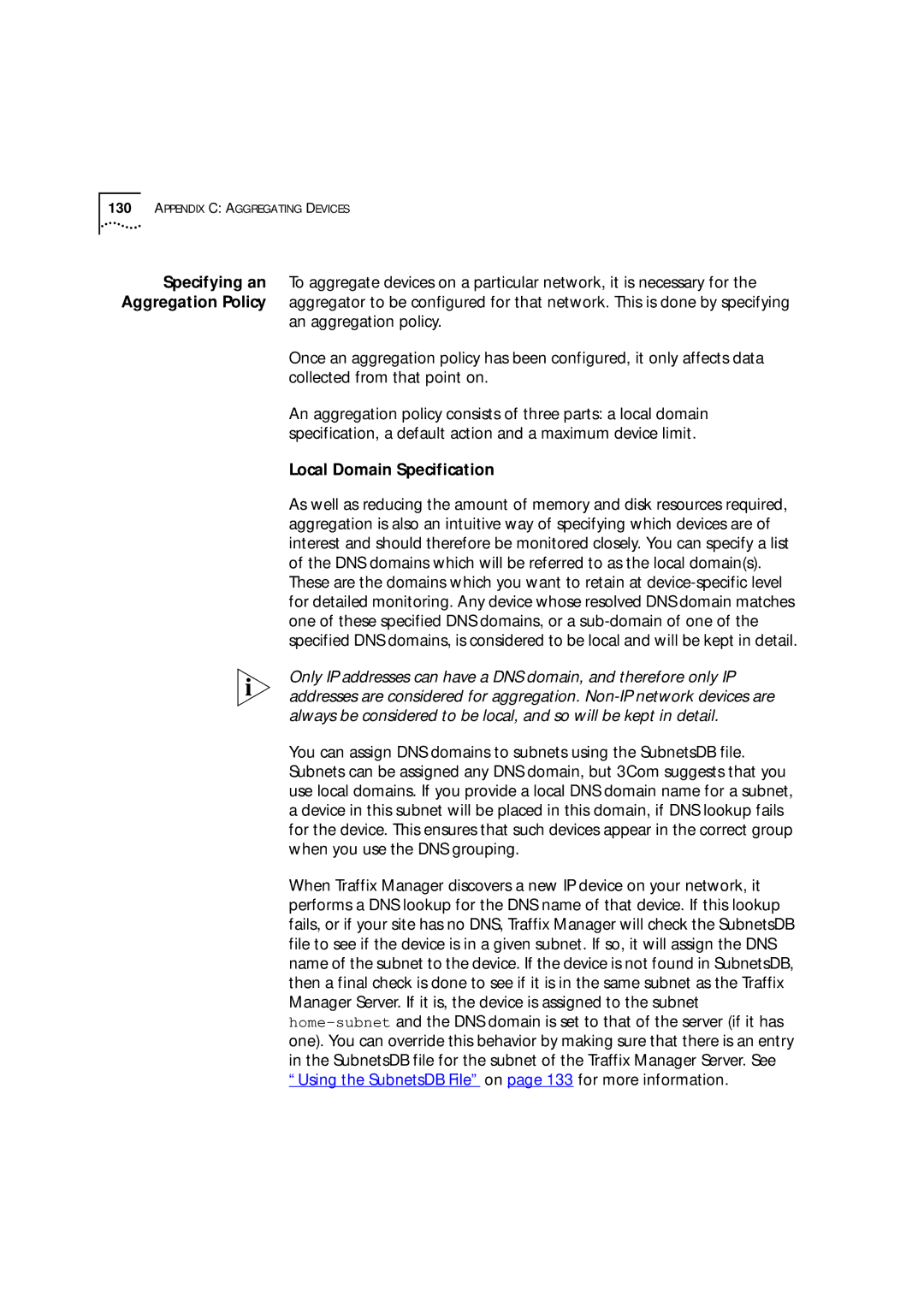
130APPENDIX C: AGGREGATING DEVICES
Specifying an To aggregate devices on a particular network, it is necessary for the Aggregation Policy aggregator to be configured for that network. This is done by specifying
an aggregation policy.
Once an aggregation policy has been configured, it only affects data collected from that point on.
An aggregation policy consists of three parts: a local domain specification, a default action and a maximum device limit.
Local Domain Specification
As well as reducing the amount of memory and disk resources required, aggregation is also an intuitive way of specifying which devices are of interest and should therefore be monitored closely. You can specify a list of the DNS domains which will be referred to as the local domain(s). These are the domains which you want to retain at
Only IP addresses can have a DNS domain, and therefore only IP addresses are considered for aggregation.
You can assign DNS domains to subnets using the SubnetsDB file. Subnets can be assigned any DNS domain, but 3Com suggests that you use local domains. If you provide a local DNS domain name for a subnet, a device in this subnet will be placed in this domain, if DNS lookup fails for the device. This ensures that such devices appear in the correct group when you use the DNS grouping.
When Traffix Manager discovers a new IP device on your network, it performs a DNS lookup for the DNS name of that device. If this lookup fails, or if your site has no DNS, Traffix Manager will check the SubnetsDB file to see if the device is in a given subnet. If so, it will assign the DNS name of the subnet to the device. If the device is not found in SubnetsDB, then a final check is done to see if it is in the same subnet as the Traffix Manager Server. If it is, the device is assigned to the subnet
